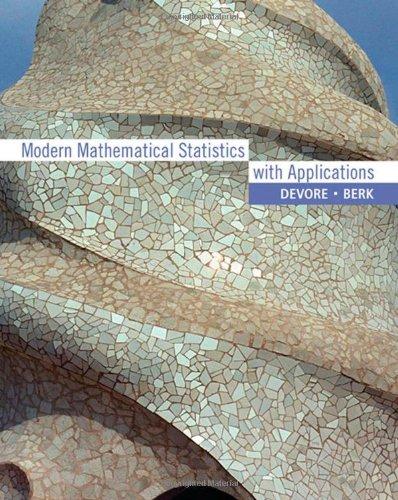47. Do the successive digits in the decimal expansion of p behave as though they were selected...
Question:
47. Do the successive digits in the decimal expansion of p behave as though they were selected from a x2 x1 random number table (or came from a computer s random number generator)?
a. Let p0 denote the long-run proportion of digits in the expansion that equal 0, and de ne p1, . . . , p9 analogously. What hypotheses about these proportions should be tested, and what is df for the chi-squared test?
b. H0 of part
(a) would not be rejected for the nonrandom sequence 012 . . . 901 . . . 901 . . . . Consider nonoverlapping groups of two digits, and let pij denote the long-run proportion of groups for which the rst digit is i and the second digit is j. What hypotheses about these proportions should be tested, and what is df for the chisquared test?
c. Consider nonoverlapping groups of 5 digits.
Could a chi-squared test of appropriate hypotheses about the pijklm s be based on the rst 100,000 digits? Explain.
d. The paper Are the Digits of p an Independent and Identically Distributed Sequence? (Amer.
Statist., 2000: 12—16) considered the rst 1,254,540 digits of p, and reported the following P-values for group sizes of 1, . . . , 5: .572, .078,
.529, .691, .298. What would you conclude?
Step by Step Answer:

Modern Mathematical Statistics With Applications
ISBN: 9780534404734
1st Edition
Authors: Jay L Devore






